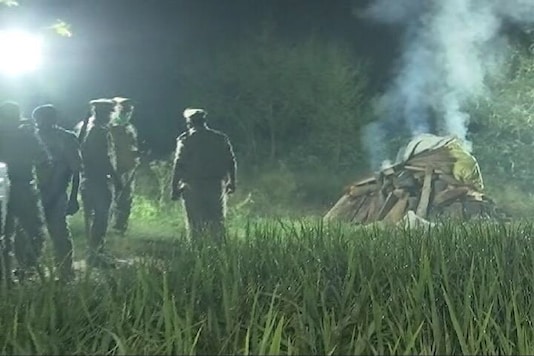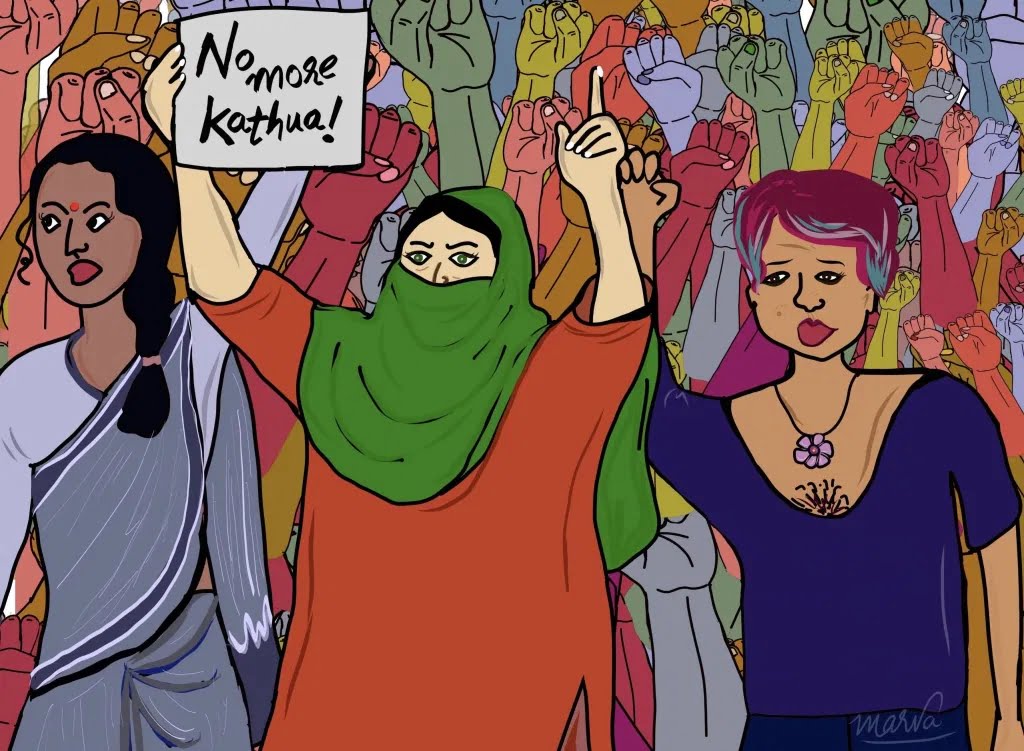TW: Rape
The victim in Uttar Pradesh’s Hathras district, a Dalit girl from the Valmiki caste community, was dragged into a field, raped and was later found with several injuries all over her body. She died a long battle before succumbing to the injuries. And this isn’t the first instance in Uttar Pradesh. Which is why, there is a need to overhawl the system to instill a survivor-centric approach.
Not long ago, a girl in Lakhimpur Kheri District, who went out to relieve herself not too far away from her house, was found dead and raped. The 2018 report of the National Crime Records Bureau (NCRB) mentioned Uttar Pradesh heading the list with 59,445 cases of crime against women. A total of 79,832 cases there for trial in 2018, including 40,045 sent to court to which the court gave a judgment in 8,805 cases and discharged 1,243 cases.
And with this rate of crimes against women, all one gets to now hear is ‘ye to aam baat hain’ (this is all common). And to think that we have not exactly seen a change for the better after Justice Verma Committee’s amendments in the criminal law just because with the amendments, there has not been a survivor-centric approach or a change in the perspective of the legal system towards cases such as rape.
To think that we have not exactly seen a change for the better after Justice Verma Committee’s amendments in the criminal law just because with the amendments, there has not been a survivor-centric approach or a change in the perspective of the legal system towards cases such as rape.
Also read: How Far Is Hathras From Your home?
The truth is, the more stringent the laws, the more will be the criminal cases. As per the Criminal Law (Amendment) Act, 2013 the punishment for rape (Section 376) is rigorous imprisonment for a term not be less than ten years, but which may extend to imprisonment for life. Despite such strong laws to tackle a crime as heinous as rape, evidently nothing much has changed so far, because of the lack of a survivor-centric approach.
Now, here, the argument arises, how do the perpetrators gain the courage to violate what are such stringent laws meant to attenuate the rape statistics. The answer entices the consistent aspect of political interventions to protect such criminals and safeguarding them. As we witnessed in the Hathras gangrape incident, the police-politician nexus made a mockery of rape investigation, showing an absolute lack of empathy and a survivor-centric approach.
The system must be sturdy enough to deter the criminal minds with quick and scientific investigations, trials and conviction. We have multiple and quite elaborate laws but along with a lack of survivor-centric approach, also have poor execution because of impunity and political associations of the perpetrators, if not due to other factors such as caste and class privilege, etc.
Rape cases are susceptible to political manipulation by influential defendants. The courts should especially seek to fast track cases wherein the accused are from influential segments of the society. The rape culture trivialises sexual abuse and assault on women by often drawing on the analogy of clapping. Just like it is out of the question to clap with one hand, the culture talks about how a victim is equally responsible for their rape, showing an absolute lack of a survivor-centric approach and a culture of victim-shamin.
These are the few instances that bring us to the deeply entrenched, archaic understanding of women as mere commodities or objects that possess no social status. In the book, Towards A Feminist Theory Of The State by Catherine Mackinnon, she states “ All women live in sexual objectification the way fish live in water —meaning by this, presumably, not only that objectification surrounds women, but also that they have become such that they derive their nourishment and sustenance from it.”
The solution, however, doesn’t lie with the making of the codes, but a survivor-centered approach to justice. In S. S. Ahluwalia vs. UOI (2001), the Hon’ble Supreme Court held “in expanded meaning attributed to Article 21 of the Constitution, where the State fails to protect the life of the people, it could not escape the liability to pay compensation to the victims.”
After the December 2012 gangrape case, the government started the the Nirbhaya fund, administered by the Department of Economic Affairs, Ministry of Finance. The Women and Child Development Ministry examines the programs submitted thereto by the states under the Nirbhaya scheme, approves them, and recommends to the department of economic affairs for allocating funds. The states have been allocating money for key schemes such as emergency responses support system, Central Victim Compensation Fund (CVCF), cybercrime prevention against women and children, one-stop centers, Mahila police volunteers, and universalisation of women helpline schemes.
The Centre allots money to the states, which in turn spend it on programs meant for ensuring women’s protection. The State Governments/ UTs are responsible for registration and investigation of crimes under the Code of Criminal Procedure, as well as a grant of monetary assistance/ compensation to survivors.
Also read: Not Just Rape… The ‘Commentary’ On Hathras Rape Case & The Lack Of A Caste-Sensitive Lens
However, in what is reflective of a survivor-centric approach, in 2019 when the Centre tabled the data of expenditure from the funds, it was found to be too low, implying the lack of importance given to women’s safety as a primary issue in the country. No state has reported utilisation of over 50% of the fund and that of the Union Territories is less than 15%.
Additionally, there is a lack of awareness among survivors, police, and lawyers about the survivors’ right to be compensated. Further, most of the times, survivors don’t get compensation as police fail to forward cases to State Legal Service Authority (SLSA) the sanctioning body, thus severely impacting justice.
“It is a weakness of our jurisprudence that the victims of the crime, and the distress of the dependants of the prisoner, do not attract the attention of the law. Indeed, victim reparation is still the vanishing point of our criminal law. This is a deficiency in the system which must be rectified by the Legislature. We can only draw attention in this matter.”, Justice Krishna Ayyar had said in 1980 in the “Rattan Singh vs. State of Punjab”

The survivor-centric approach including police reforms, increase in conviction rates and an unsullied political scene is significant for the society.
The survivor-centric approach including police reforms, increase in conviction rates and an unsullied political scene is significant for the society. The system with abundant laws cannot put an end to rape cases, but putting weights on those laws in the way of delivering fair and speedy convictions, ensuring a rehabilitation-oriented approach and educating them could be a commendable beginning.
Anamika is currently pursuing law from the Faculty of Law at Delhi University. She sees herself as a judicial officer in the next few years as it is apodictic that peace and order in the society can be kept alive only by the rule of law and that firstly shall require to be in the form of a good administration of justice. In her free time, she likes to read philosophy, politics, and people.
Featured Image Source: Marva M/Feminism In India




